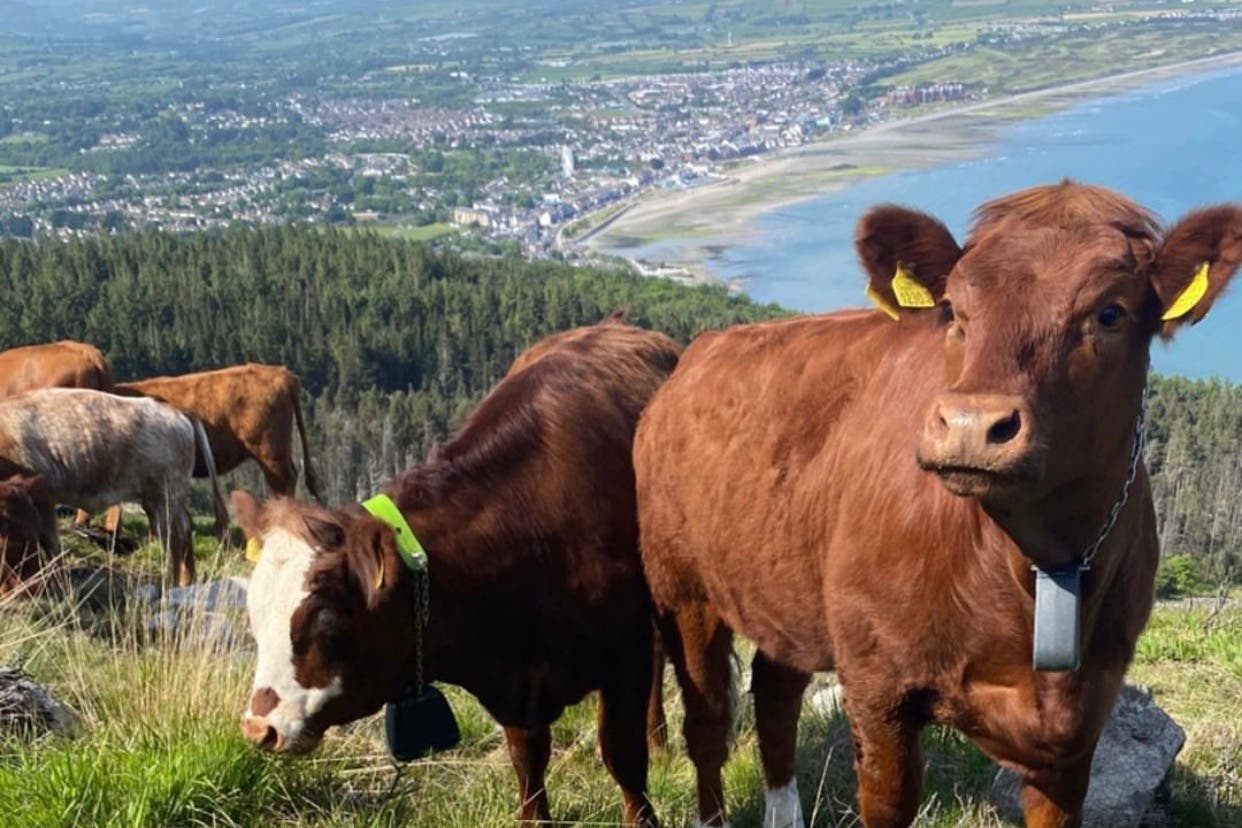Traditional cows to help bring mountainside back to life after devastating fires
It is the latest initiative to aid recovery in the Mournes following the fires in April 2021.

Your support helps us to tell the story
From reproductive rights to climate change to Big Tech, The Independent is on the ground when the story is developing. Whether it's investigating the financials of Elon Musk's pro-Trump PAC or producing our latest documentary, 'The A Word', which shines a light on the American women fighting for reproductive rights, we know how important it is to parse out the facts from the messaging.
At such a critical moment in US history, we need reporters on the ground. Your donation allows us to keep sending journalists to speak to both sides of the story.
The Independent is trusted by Americans across the entire political spectrum. And unlike many other quality news outlets, we choose not to lock Americans out of our reporting and analysis with paywalls. We believe quality journalism should be available to everyone, paid for by those who can afford it.
Your support makes all the difference.Traditional cattle are set to aid the recovery of one of Northern Ireland’s most iconic landscapes following devastating fires.
Destruction was wrecked across a section of the Mourne Mountains in Co Down by a widespread blaze in April 2021.
Some 720 acres, including part of the Northern Ireland’s highest peak Slieve Donard, was impacted by the flames during one of the biggest fires of its kind recorded in the region.
Firefighters worked for days to quell the flames.
However there has been a longer process with several initiatives to help restore scorched flora and fauna, destroyed vegetation, and species diversity.
The National Trust, which cares for much of the area, has been trialling different methods to rejuvenate the land and bring it back to full health for the plants and animals that live there.
The area is a Site of Special Scientific Interest and home to animals including the Irish hare, and rare plants like the pale butterwort and starry saxifrage.
Now the charity is working in partnership with its tenant farmer to add a herd of Luing cattle to restoration efforts.
The herd of six cows will trample bracken and chomp through the dominant purple moor-grass that has sprung up since the fire, providing the space for native plants and heather to return, and creating habitat for newts, lizards, ground-nesting birds and hares.
The animals, which are looked after by a tenant farmer, will wear special collars with GPS tracking, which allows virtual fences to be created to allow targeted grazing in particular areas without the need for fencing.
We’re delighted to bring this innovative No Fence technology to the Mournes
Kevin Duncan, land use and farming adviser at the National Trust in Northern Ireland said: “We’re delighted to bring this innovative No Fence technology to the Mournes as it has been shown to be an effective tool to deliver targeted conservation grazing management.
“Our farmer has spent a long time researching a suitable breed of animal for the job, one which is hardy enough to deliver conservation grazing in this upland environment whilst still producing good beef calves for the market.”
He described the Luing as “hardy” and suited conservation grazing in the uplands due to their highland heritage and docile nature.
“This traditional breed of cattle isn’t a fussy browser and will chomp down rank grasses like purple moor-grass, unlike sheep which are a more selective grazer.
“Cattle would have been much more common on uplands in days gone-by and both cattle and sheep grazing at the right intensity are vital to ensuring a landscape rich in wildlife.”
It is exciting to see the return of cattle to the Mournes, it will be particularly interesting to see how their grazing will aid in the recovery of the habitats damaged by the 2021 wildfire
The National Trust said the cows have been carefully trained to respond to the collars before their introduction to get used to them – and they have also been supervised by a vet to ensure no undue stress is caused.
Patrick Doran, wildfire recovery ranger at the National Trust will monitor the success of the grazing.
“It is exciting to see the return of cattle to the Mournes, it will be particularly interesting to see how their grazing will aid in the recovery of the habitats damaged by the 2021 wildfire,” he said.
“We hope the cattle will help reduce the cover of purple moor-grass in the area, which is inhibiting the recovery of the habitat, reducing the cover of this species will allow heather to recover.
“These changes will be determined by ongoing monitoring carried out across the site.”
The farmer involved, John Maginn, said the collars are a great example of how advancing technologies to aid day-to-day livestock management.
“Initial training of the cattle has shown them to be fast learners of the audio signals,” he said.
“This has given me great confidence in trialling this innovative technology and I am very encouraged for the wider positive implications it could have for the farming sector to aid grazing management.”